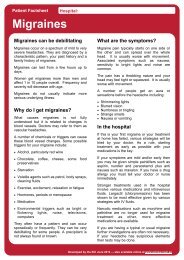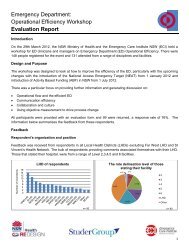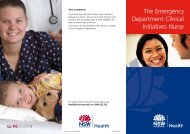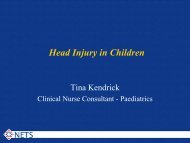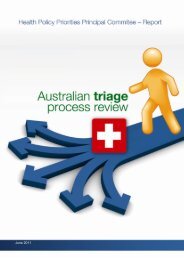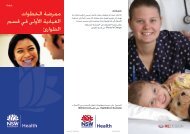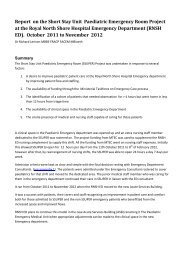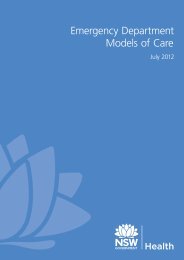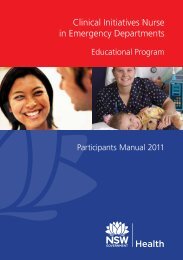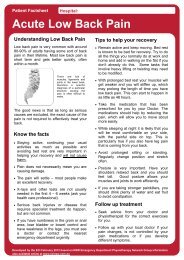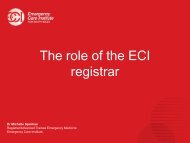Facilitators Manual - Emergency Care Institute
Facilitators Manual - Emergency Care Institute
Facilitators Manual - Emergency Care Institute
You also want an ePaper? Increase the reach of your titles
YUMPU automatically turns print PDFs into web optimized ePapers that Google loves.
5.2 Primary Survey – BreathingBBreathing Assessment Assessment Tips Yes NoLookListenFeelThe chest must be fully visualised for examination.Look for:• Spontaneous respirations.• Symmetrical rise and fall of the chest.• The rate, rhythm and depth of respirations.• Any accessory muscle use: intercostal/subcostal retractions,abdominal muscle usage, excessive nasal flaring, pursedlips, tracheal tug or tracheal deviation.• Paradoxical movements.• Subtle or excessive injury to the chest wall and upperabdomen. Also note the shape of the chest. Are there anyscars, lesions or deformities?Listen for:• Equal air entry.• Observe the chest wall for movement and symmetry• Document any abnormal breath sounds:• Wheeze, crackles, creps etcFeel for:• Chest movement – air flow.• Palpate for symmetry, tenderness/fractures.• Trachea position.• Subcutaneous emphysema, which is a crackling sensationon the upper chest wall due to air trapped under the skinfrom injury or surgery.41Mastery Yes NoAssessor’s Nameand Designation:Assessor’sSignature:Comments:Date:INTERVENTIONS – BREATHINGClinical SkillAppropriate selection of oxygendevice and administrationBag valve maskDate MasteryAchievedName, designation and signature of AssessorAccurate SpO 2 measure, waveform and clinical applicationPeak flowSpirometryNon Invasive Ventilation




